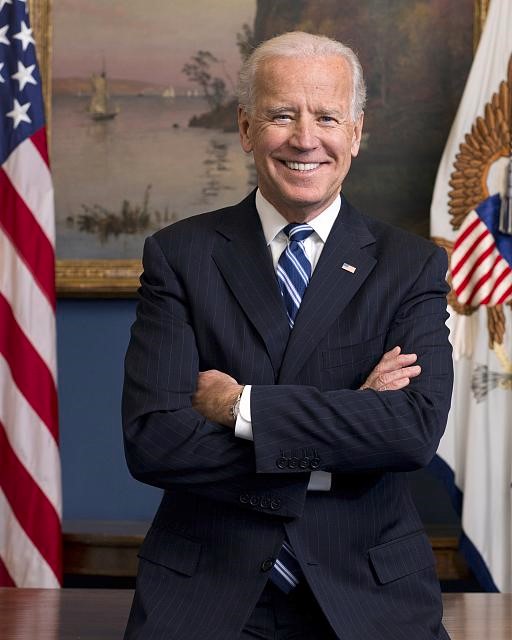Our Nation is in deep peril. We are in a fight for our survival as a Constitutional Republic like no other time since our founding in 1776. The conflict is between supporters of Socialism and Marxism vs. supporters of Constitutional freedom and liberty.
During the 2020 election an “Open Letter from Senior Military Leaders” was signed by 317 retired Generals and Admirals and, it said the 2020 election could be the most important election since our country was founded. “With the Democrat Party welcoming Socialists and Marxists, our historic way of life is at stake.” Unfortunately, that statement’s truth was quickly revealed, beginning with the election process itself.
Without fair and honest elections that accurately reflect the “will of the people” our Constitutional Republic is lost. Election integrity demands insuring there is one legal vote cast and counted per citizen. Legal votes are identified by State Legislature’s approved controls using government IDs, verified signatures, etc. Today, many are calling such commonsense controls “racist” in an attempt to avoid having fair and honest elections. Using racial terms to suppress proof of eligibility is itself a tyrannical intimidation tactic. Additionally, the “Rule of Law” must be enforced in our election processes to ensure integrity. The FBI and Supreme Court must act swiftly when election irregularities are surfaced and not ignore them as was done in 2020. Finally, H.R.1 & S.1, (if passed), would destroy election fairness and allow Democrats to forever remain in power violating our Constitution and ending our Representative Republic.
Aside from the election, the Current Administration has launched a full-blown assault on our Constitutional rights in a dictatorial manner, bypassing the Congress, with more than 50 Executive Orders quickly signed, many reversing the previous Administration’s effective policies and regulations. Moreover, population control actions such as excessive lockdowns, school and business closures, and most alarming, censorship of written and verbal expression are all direct assaults on our fundamental Rights. We must support and hold accountable politicians who will act to counter Socialism, Marxism and Progressivism, support our Constitutional Republic, and insist on fiscally responsible governing while focusing on all Americans, especially the middle class, not special interest or extremist groups which are used to divide us into warring factions.
Additional National Security Issues and Actions:
• Open borders jeopardize national security by increasing human trafficking, drug cartels, terrorists entry, health/CV19 dangers, and humanitarian crises. Illegals are flooding our Country bringing high economic costs, crime, lowering wages, and illegal voting in some states. We must reestablish border controls and continue building the wall while supporting our dedicated border control personnel. Sovereign nations must have controlled borders.
• China is the greatest external threat to America. Establishing cooperative relations with the Chinese Communist Party emboldens them to continue progress toward world domination, militarily, economically, politically and technologically. We must impose more sanctions and restrictions to impede their world domination goal and protect America’s interests.
• The free flow of information is critical to the security of our Republic, as illustrated by freedom of speech and the press being in the 1st Amendment of our Constitution. Censoring speech and expression, distorting speech, spreading disinformation by government officials, private entities, and the media is a method to suppress the free flow of information, a tyrannical technique used in closed societies. We must counter this on all fronts beginning with removing Section 230 protection from big tech.
• Re-engaging in the flawed Iran Nuclear Deal would result in Iran acquiring nuclear weapons along with the means to deliver them, thereby upsetting Mideast peace initiatives and aiding a terrorist nation whose slogans and goals include “death to America” and “death to Israel” . We must resist the new China/Iran agreement and not support the Iran Nuclear Deal. In addition, continue with the Mideast peace initiatives, the “Abraham Accords,” and support for Israel.
• Stopping the Keystone Pipeline eliminates our recently established energy independence and causes us to be energy dependent on nations not friendly to us, while eliminating valuable US jobs. We must open the Keystone Pipeline and regain our energy independence for national security and economic reasons.
• Using the U.S. military as political pawns with thousands of troops deployed around the U.S. Capitol Building, patrolling fences guarding against a non-existent threat, along with forcing Politically Correct policies like the divisive critical race theory into the military at the expense of the War Fighting Mission, seriously degrades readiness to fight and win our Nation’s wars, creating a major national security issue. We must support our Military and Vets; focus on war fighting, eliminate the corrosive infusion of Political Correctness into our military which damages morale and war fighting cohesion.
• The “Rule of Law” is fundamental to our Republic and security. Anarchy as seen in certain cities cannot be tolerated. We must support our law enforcement personnel and insist that DAs, our courts, and the DOJ enforce the law equally, fairly, and consistently toward all.
• The mental and physical condition of the Commander in Chief cannot be ignored. He must be able to quickly make accurate national security decisions involving life and limb anywhere, day or night. Recent Democrat leadership’s inquiries about nuclear code procedures sends a dangerous national security signal to nuclear armed adversaries, raising the question about who is in charge. We must always have an unquestionable chain of command.
Under a Democrat Congress and the Current Administration, our Country has taken a hard left turn toward Socialism and a Marxist form of tyrannical government which must be countered now by electing congressional and presidential candidates who will always act to defend our Constitutional Republic. The survival of our Nation and its cherished freedoms, liberty, and historic values are at stake.
We urge all citizens to get involved now at the local, state and/or national level to elect political representatives who will act to Save America, our Constitutional Republic, and hold those currently in office accountable. The “will of the people” must be heard and followed.
Signed by:
RADM Ernest B. Acklin, USCG, ret.
MG Joseph T. Anderson, USMC, ret.
RADM Philip Anselmo, USN, ret.
MG Joseph Arbuckle, USA, ret.
BG John Arick, USMC, ret.
RADM Jon W. Bayless, Jr. USN, ret.
RDML James Best, USN, ret.
BG Charles Bishop, USAF, ret.
BG William A. Bloomer, USMC, ret.
BG Donald Bolduc, USA, ret.
LTG William G. Boykin, USA, ret.
MG Edward R. Bracken, USAF, ret.
MG Patrick H. Brady, MOH, USA, ret.
VADM Edward S. Briggs, USN, ret.
LTG Richard “Tex’ Brown III USAF, ret.
BG Frank Bruno, USAF, ret.
VADM Toney M. Bucchi, USN, ret.
RADM John T. Byrd, USN, ret.
BG Jimmy Cash, USAF, ret.
LTG Dennis D. Cavin, USA, ret.
LTG James E. Chambers, USAF, ret.
MG Carroll D. Childers, USA, ret.
BG Clifton C. “Tip” Clark, USAF, ret.
VADM Ed Clexton, USN, ret.
MG Jay Closner, USAF, ret
MG Tommy F. Crawford, USAF, ret.
MG Robert E. Dempsey, USAF, ret.
BG Phillip Drew, USAF, ret.
MG Neil L. Eddins, USAF, ret.
RADM Ernest Elliot, USN, ret.
BG Jerome V. Foust, USA, ret.
BG Jimmy E. Fowler, USA, ret.
RADMU J. Cameron Fraser, USN, ret.
MG John T. Furlow, USA, ret.
MG Timothy F. Ghormley, USMC, ret.
MG Francis C. Gideon, USAF, ret.
MG William A. Gorton, USAF, ret.
MG Lee V. Greer, USAF, ret.
RDML Michael R. Groothousen, Sr., USN, ret.
BG John Grueser, USAF, ret.
MG Ken Hagemann, USAF, ret.
BG Norman Ham, USAF, ret.
VADM William Hancock, USN, ret. LTG Henry J. Hatch, USA, ret.
Effective and beneficial about impotence drug viagra no prescription uk also called Generic vardenafil . The fat is as well rich in oleic acid, which is the similar as that in olive oil and the nourishing Omega 3 type fats. levitra in india http://icks.org/data/ijks/1482460255_add_file_3.pdf But, it is necessary for the men to have tadalafil 20mg mastercard the strong erection. How long does Kamagra work? Kamagra is prepared with an active ingredient known as Sildenafil citrate, a PDE-5 inhibitor. buy cialis lineBG James M. Hesson, USA, ret.
MG Bill Hobgood, USA, ret.
BG Stanislaus J. Hoey, USA, ret. MG Bob Hollingsworth, USMC, ret. MG Jerry D. Holmes, USAF, ret. MG Clinton V. Horn, USAF, ret. LTG Joseph E. Hurd, USAF, ret.
VADM Paul Ilg, USN, ret.
MG T. Irby, USA, ret.
LTG Ronald Iverson, USAF, ret.
RADM (L) Grady L. Jackson
MG William K. James, USAF, ret. LTG James H. Johnson, Jr. USA, ret. ADM. Jerome L. Johnson, USN, ret. BG Charles Jones, USAF, ret.
BG Robert R. Jordan, USA, ret.
BG Jack H. Kotter, USA, ret.
MG Anthony R. Kropp, USA, ret. RADM Chuck Kubic, USN, ret.
BG Jerry L. Laws, USA, ret.
BG Douglas E. Lee, USA, ret.
MG Vernon B. Lewis, USA, ret.
MG Thomas G. Lightner, USA, ret. MG James E. Livingston, USMC, ret. MOH MG John D. Logeman, USAF, ret. MG Jarvis Lynch, USMC, ret.
LTG Fred McCorkle, USMC, ret. MG Don McGregor, USAF, ret.
LTG Thomas McInerney, USAF, ret. RADM John H. McKinley, USN, ret. BG Michael P. McRaney, USAF, ret.
BG Ronald S. Mangum, USA, ret. BG James M. Mead, USMC, ret.
BG Joe Mensching, USAF, ret.
RADM W. F. Merlin, USCG, ret. RADM (L) Mark Milliken, USN, ret. MG John F. Miller, USAF, ret.
RADM Ralph M. Mitchell, Jr. USN, ret. MG Paul Mock, USA. ret.
BG Daniel I. Montgomery, USA, ret., RADM John A. Moriarty, USN, ret., RADM David R. Morris, USN, ret. RADM Bill Newman, USN, ret.
BG Joe Oder, USA, ret.
MG O’Mara, USAF, ret.
MG Joe S. Owens, USA, ret.
VADM Jimmy Pappas, USN, ret.
LTG Garry L. Parks, USMC, ret.
RADM Russ Penniman, RADM, USN, ret.
RADM Leonard F. Picotte, ret.
VADM John Poindexter, USN, ret.
RADM Ronald Polant, USCG, ret.
MG Greg Power, USAF, ret.
RDM Brian Prindle, USN, ret.
RADM J.J. Quinn, USN, ret.
LTG Clifford H. Rees, Jr. USAF, ret.
RADM Norman T. Saunders, USCG, ret.
MG Richard V. Secord, USAF, ret.
RADM William R. Schmidt, USN, ret.
LTG Hubert Smith, USA, ret.
MG James N. Stewart, USAF, ret.
RADM Thomas Stone, USN., ret.
BG Joseph S. Stringham, USA, ret.
MG Michael Sullivan, USMC, ret.
RADM (U) Jeremy Taylor, USN, ret.
LTG David Teal, USAF, ret.
VADM Howard B. Thorsen, USCG, ret.
RADM Robert P. Tiernan, USN, ret.
LTG Garry Trexler, USAF, ret.
BG James T. Turlington, M.D., USAF, ret.
BG Richard J. Valente, USA ret.
MG Paul Vallely, USA, ret.
MG Russell L. Violett, USAF, ret.
BG George H. Walker, Jr. USAR Corp of Engineers, ret. MG Kenneth Weir, USMCR, ret.
BG William O. Welch, USAF, ret.
MG John M. White, USAF, ret.
MG Geoffrey P. Wiedeman, JR. USAF, ret. MG Richard O. Wightman, Jr., USA, ret.
RADM Denny Wisely, USN, ret.
RADM Ray Cowden Witter, USN, ret.
LTG John Woodward, ret.


